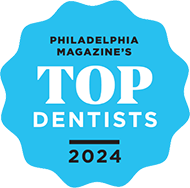






They are inside your laptop computer and your DVD player, present on the factory floor and the supermarket checkout line. And now, lasers are finding increasing use in dentistry. You may have a routine dental procedure performed in our office with the aid of a powerful, yet highly controllable beam of laser light, instead of a drill or a probe. Essentially, that means that they emit light which has a great deal of energy, yet can be precisely controlled. It's the combination of high energy and precision that make lasers so useful.

In our office we use lasers for the detection and treatment of oral diseases. We use 3 different lasers:
1. DiagnoDent Cavity Laser – This device uses light of specific wavelength, which can detect tiny pits and fissures in the biting surfaces of the tooth that a traditional dental tool can't find. This enables pinpointing tooth decay in its early stages so small cavities can be found and treated sooner.
2. LightScalpel CO2 Laser – This laser is a minimally invasive tool that takes away less tissue than conventional methods. Used in gum surgery, for example, we can treat gum disease by killing harmful bacteria deep in pockets below the gum line, and removing the diseased tissue without harming the healthy tissue. It is also effective in treating ulcers and sores on the lips or gums, doing biopsies, and can be used to eliminate tongue-ties and lip-ties in infants, children, and adults.

3. Diode Laser – This laser can precisely remove tissue, seal painful ulcerations like canker sores, and also increase the speed of wound healing with low level laser therapy (LLLT).

As lasers become more common in the dental office, these high-tech tools will be integrated into routine dental practice. This promising technology already offers some real benefits, and is sure to find increasing use in the near future.
Our goal is to help every patient experience the benefits of good oral health and a beautiful smile. We value the trust you have placed in our office and strive to provide solutions that meet your dental needs and expectations of care.
